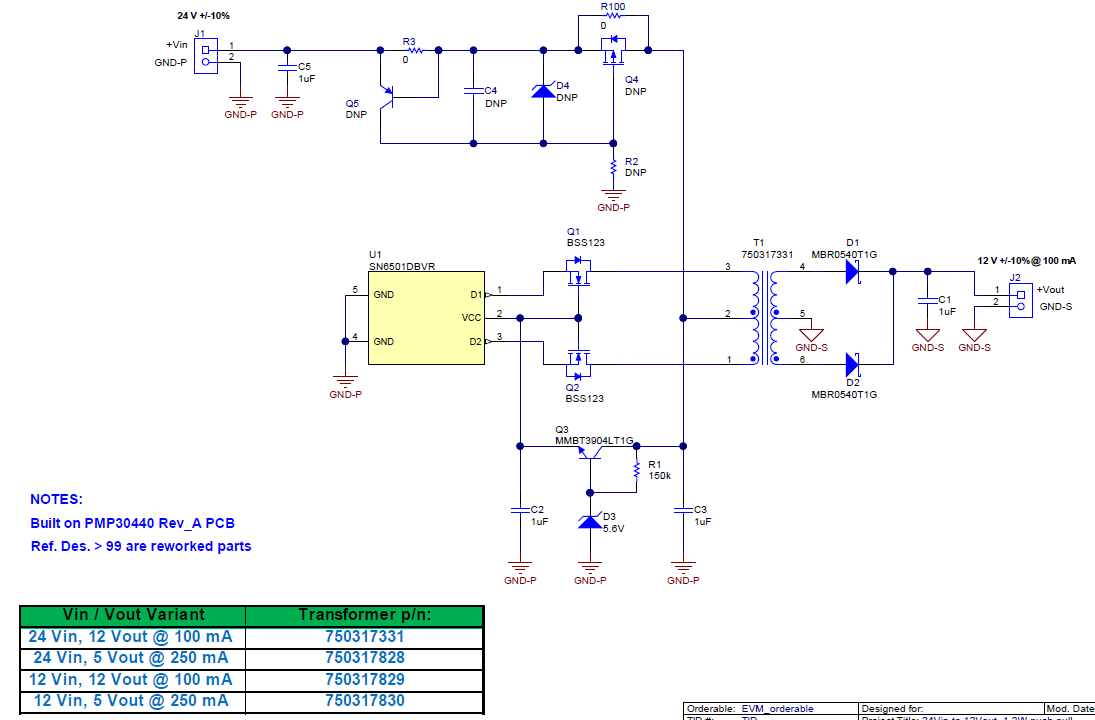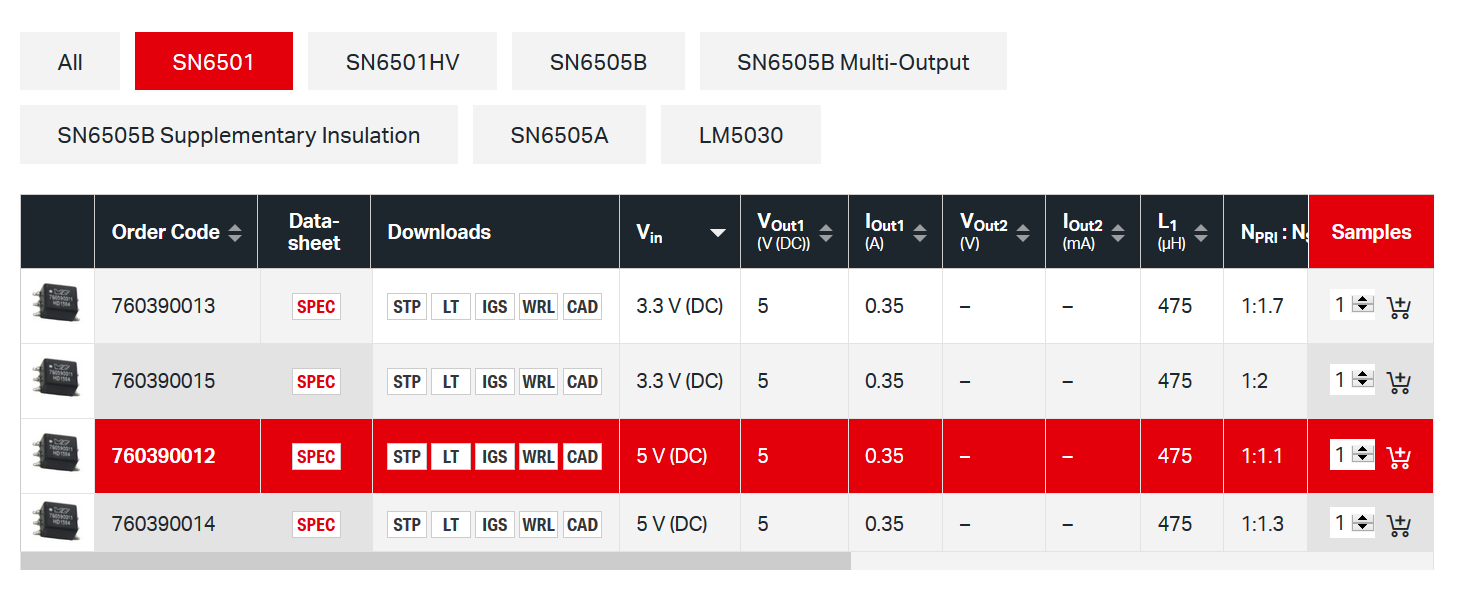Other Parts Discussed in Thread: ISO7021, ISO7710, PMP30440, SN6505B, SN6505A
Dear,
Current I'm doing a design which has to be an isolated power supply.
The source voltage I could use is 12V (minimum could be 10.4V) at the primary side, I used a 3V3-LDO to get 3V3 first, and then increased 3V3 to ~13.86V (2*2.1*3.3V) by SN6501 high output voltage application, and then decreased 13.86V to 8V2, another 3V3 LDO is used to get another 3V3. The 3V3 at the primary and secondary side is used for the optical coupler, and 8V2 is used for the power of input detection circuit.
I know this is not good for the efficiency because the voltage from 12V to 3V3 and to 13.86V and then to 3V3 again. But the input voltage of SN6501 only can reach 5.5V max.
Do you have some better idea which could realize this function? Maybe switch power supply could, but I don't have the concept currently, do you have some low cost and low current consumption concept?
Thanks a lot and have a nice day!





